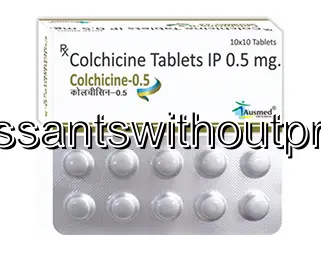Buy Autumn Crocus (Colchicum Autumnale) Online in Australia – Fast, Hassle-Free Access
| Package | Dosage | Price | Price per Dose | |
|---|---|---|---|---|
| Dosage: 0,5mg | ||||
| 270 pill | 0,5mg | AUD391.36 | AUD1.45 | |
| 360 pill | 0,5mg | AUD381.70 | AUD1.06 | |
| 180 pill | 0,5mg | AUD330.96 | AUD1.84 | |
| 120 pill | 0,5mg | AUD289.89 | AUD2.42 | |
| 90 pill | 0,5mg | AUD248.82 | AUD2.75 | |
| 60 pill | 0,5mg | AUD193.25 | AUD3.21 | |

Autumn Crocus Description
Introduction to Autumn Crocus
The Autumn Crocus, also known by its scientific name Colchicum autumnale, is a perennial flowering plant that blooms in the fall. It is a striking botanical specimen with large, lily-like flowers that typically appear in late September to November. Native to parts of Europe, especially the UK and France, this plant has a long history of use in traditional medicine. Its vibrant purple or pink blooms make it easily recognizable in gardens, but the plant's primary importance lies in its chemical properties and medicinal application. The substance derived from this plant has been utilized for centuries to treat gout, certain types of cancer, and other inflammatory conditions. However, it is crucial to recognize that Autumn Crocus contains potent alkaloids that can be highly toxic if misused or improperly prepared.
Active Components and Pharmacology
The main active compound in Autumn Crocus is colchicine, a powerful alkaloid. Colchicine works by disrupting the microtubule formation within cells, affecting cell division and reducing inflammation. This mechanism underpins its effectiveness in treating gout, where it helps prevent the formation of urate crystals in joints. Besides colchicine, the plant contains other alkaloids with potential pharmacological activities, although colchicine remains the most well-studied and utilized compound. The absorption of colchicine after oral administration is relatively rapid, with peak plasma concentrations typically reached within hours. Its metabolic pathway involves the liver, and the drug is excreted primarily through the kidneys. Due to its potency, careful dosing is essential to prevent toxicity, especially in individuals with compromised liver or kidney function.
Uses and Benefits of Autumn Crocus in Medicine
Autumn Crocus, through its active substance colchicine, is primarily used in medical settings to treat gouty arthritis. It effectively reduces the swelling, redness, and pain caused by uric acid crystals deposited in joints. Additionally, colchicine is employed in the management of familial Mediterranean fever, a genetic inflammatory disorder. Some research has investigated its potential role in treating certain cancer types, given its influence on cell division, but such applications are still under clinical investigation and require careful oversight. In traditional medicine, extracts from the plant were used for various ailments, but modern therapy relies on purified colchicine, administered under strict medical supervision due to the narrow therapeutic window. The drug’s anti-inflammatory properties have made it invaluable, but the risk of overdose remains significant. As such, it is used with caution in prescribed doses to maximize benefits and minimize risks.
Safety, Side Effects, and Toxicity
Despite its medicinal benefits, Autumn Crocus and its extract contain substances that are potentially dangerous. Colchicine toxicity can occur if dosed improperly, leading to symptoms such as nausea, vomiting, diarrhea, abdominal pain, and in severe cases, multi-organ failure. Overdose may be fatal, emphasizing the necessity for precise dosing and adherence to medical guidance. Long-term use or high doses can also cause bone marrow suppression, leading to blood disorders. Pregnant women and those with renal or hepatic impairment are advised against using colchicine unless explicitly prescribed by a healthcare professional. To ensure safety, raw plant material should never be used at home, as the risk of accidental poisoning is high. Pharmaceutical preparations derived from Autumn Crocus should always be obtained through legitimate, authorized sources, and used strictly under medical supervision.
Conclusion
Autumn Crocus remains a significant medicinal substance due to its active compound, colchicine. It has proven effectiveness in managing gout and other inflammatory conditions when used properly. However, its high toxicity level mandates caution and professional oversight. Currently, its primary role is within controlled medical treatments, and self-medication is strongly discouraged. With careful dosing and monitoring, colchicine derived from Autumn Crocus can offer substantial health benefits, but the risks involved require respect for the plant's potency and strict adherence to medical guidelines. Its historical and modern uses highlight both its therapeutic potential and the importance of proper handling and regulation in medicinal applications.